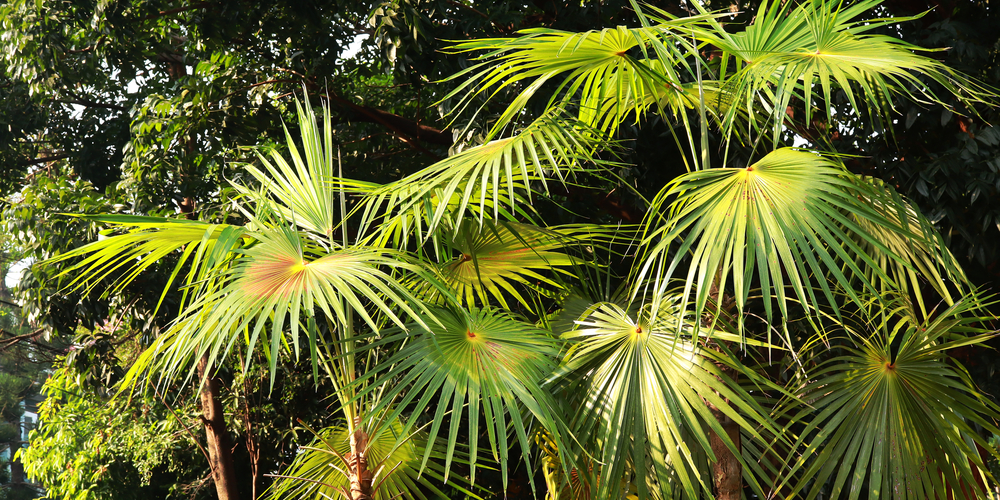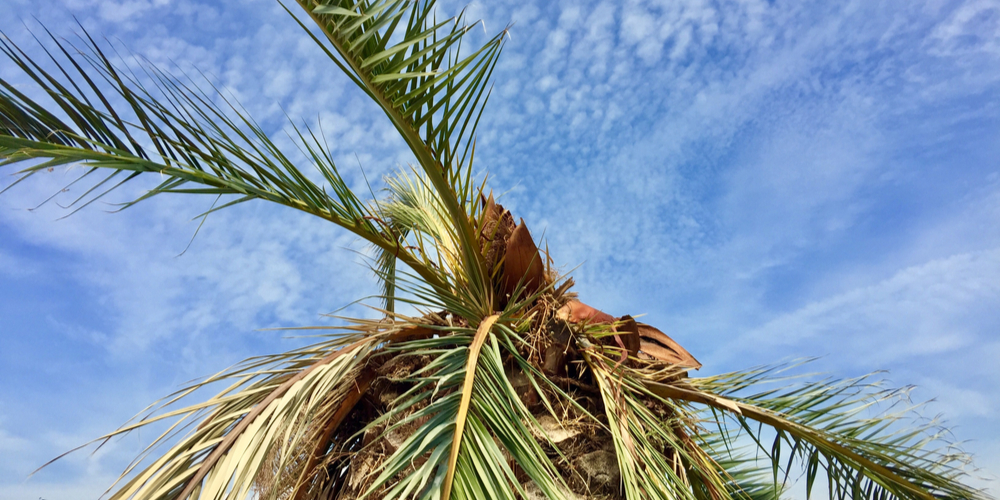Palm trees, when healthy, are very nice to look at and provide a warm tropical touch to the landscape. However, yellowing leaves are a cause for concern especially if they overtake green foliage. Why do palm leaves turn yellow? More importantly, what can you do when your palm trees take on an unhealthy hue?
Why do palm leaves turn yellow

Here are the most common reasons that a palm tree leaves may be turning yelllow:
Lack of Nutrients
Palm trees that are starved for nutrients will display several leaf problems, including yellowing, spotting, and veins turning green.
You’ll know when your palm trees need feeding if you haven’t done it yet. A surefire sign that a palm tree needs fertilizer and isn’t overwatered is when the leaves are non-droopy and there’s yellow everywhere.
To fix this problem you can apply a balanced slow-release fertilizer at the start of the plant’s growing season. Aside from NPK, or nitrogen, phosphorus and potassium you may need to provide trace elements such as iron, manganese, and magnesium as well.
Too Much Water
Most people assume that tropical plants like palm trees need more water, but this isn’t usually the case. You’ll want to keep the soil constantly moist, and perhaps allow the surface to dry out once in a while before giving your palm tree a drink again.
Common symptoms of an overwatered palm tree include yellow leaves that fall off and overly droopy foliage. It’s worth noting that there are about a dozen or so types of palm trees, and each has its watering and sun requirements.
To avoid overwatering you can amend the soil with sand and withhold the watering when the leaves appear healthy.
Diseases
Like other plants, palm trees can be affected by fungi. Fusarium wilt, for example, shows itself as a dark brown or red stripe running along the length of the stem, while lethal yellowing is where the palm leaves turn brown or yellow starting at the bottom (or the oldest) fronds and moving upwards.
Leaf spot fungi can also lead to palm leaves turning yellow. Diseases often occur among stressed plants, and eliminating the source can reverse the yellowing effect and make your palm tree healthy again.
A timely application of fungicide can really help improve the chances of your palm tree surviving. However, there are some diseases that plants may not recover from. If this is the case, then you may need to do a hard prune and dispose of the affected foliage to prevent it from spreading to your other plants.
Insect Infestation
Healthy palm trees are less susceptible to diseases and pests, but even the strongest can be affected from time to time.
Mealybugs, spider mites, and scale are some of the most common insects that can attack a palm tree. The good news is that the damage caused by these pests is often minimal, but they do lead to a yellowed palm leaf or two. Once you spot telltale signs and the presence of these pests then it’s recommended that you take immediate action.
Thorough spraying of insecticidal soap and neem oil can reduce the number of pests hanging around your palm tree. When the weather is nice and clear you can spray your palm tree leaves with water to dislodge them from their hiding places.
Transplant Shock
Newly-planted palm trees tend to exhibit yellowed leaves, which is caused by transplant shock. The sudden change in environment, climate, and having its roots disturbed are stressful for plants, and your palm will turn yellow or brown as a result.
Transplant shock can be minimized by observing several things. For one, it’s recommended that you transplant in the late afternoon or early evening when the weather is cooler. Two, you should give the palm tree plenty of water once it’s settled in. The yellowing will go away on its own after a week or so.
Natural Aging
Last but not least, your palm trees will have yellow leaves as a natural result of aging. Bottom fronds are usually the first to yellow or turn brown as time passes and as new fronds are grown at the top or crown.
If you only see one or two fronds of yellow in a sea of green, then it’s likely due to natural aging. In this case, just remove the bottom leaves or let them drop on their own.
Related Article: Indoor Palm Trees
